During Term 4, the Year 7s were given the task of the Christmas Markets. In Week 6, we were to create and sell product with our budget of $30. In small groups, we each produced unique products, which were aimed to create a profit. The loan would be paid back, and the excess money would go to the Salvation Army. Through this post, I will be explaining the Christmas Market process using the design thinking process.
Before and during the Christmas Market, we learnt about different economics concepts. This included scarcity, making choices, allocation and markets, specialisation and trade, interdependence and economic performance and living standards. Scarcity is about how resources are scarce, and therefore we have to make choices on which products to consume. This leads to making choices and opportunity costs. We make choices based on how well the product suits us, and the benefits and disadvantages it has. Opportunity cost is when we choose one option, we lose the benefits of the other option. This is also known as regret pain. Allocation and markets is about how resources are distributed differently, and are sold in markets. Markets can be physical or digital. We also learnt about interdependence and how consumers and producers rely on each other to make the economy possible. Economic performance and living standards is how well the economy is doing, and how it is linked to the liveability of a place. Some signs of economic performance include inflation, GDP and unemployment rates.
As well as this, we learnt about pricing strategies. This included cost plus margin, economy, penetration, premium, psychological and freemium. Cost plus margin is about how you price the product slightly more than the production cost. This allows the desired amount of profit. Economy pricing is bulk producing items so that you can price it lower and sell more to still make profit. Penetration is about making prices cheap initially, and making it more expensive to attract customers. Psychological pricing is about ending a price with .95 or .99 to make consumers believe it is cheaper.
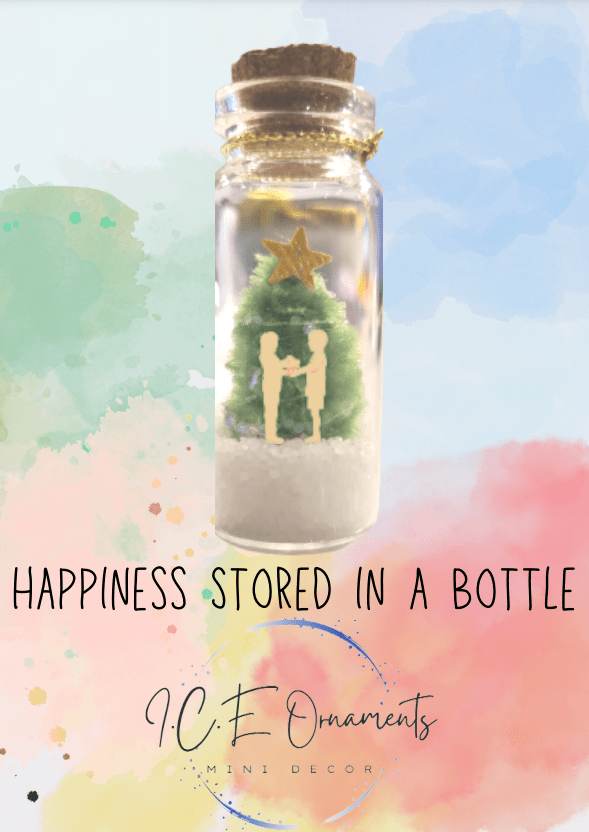
In English, we learnt about different advertising methods, such as visual and persuasive techniques. We each produced a unique poster which had to attract our target audience and advertise our product. I created poster which was later used in the Christmas Market.
Empathise Stage
At the beginning of our Christmas Market process, we began with questioning classmates’ questions relating to Christmas. This consisted of questions like, What is Christmas?, What makes a good gift for Christmas?, Does price matter when it comes to a Christmas present? and etc. Through these mini interviews, we were able to understand our audiences wants and needs, and get a clearer view on what products they were seeking. When interviewing, we had to question a large range of people, to allow a range of ideas of products to create.
Define Stage
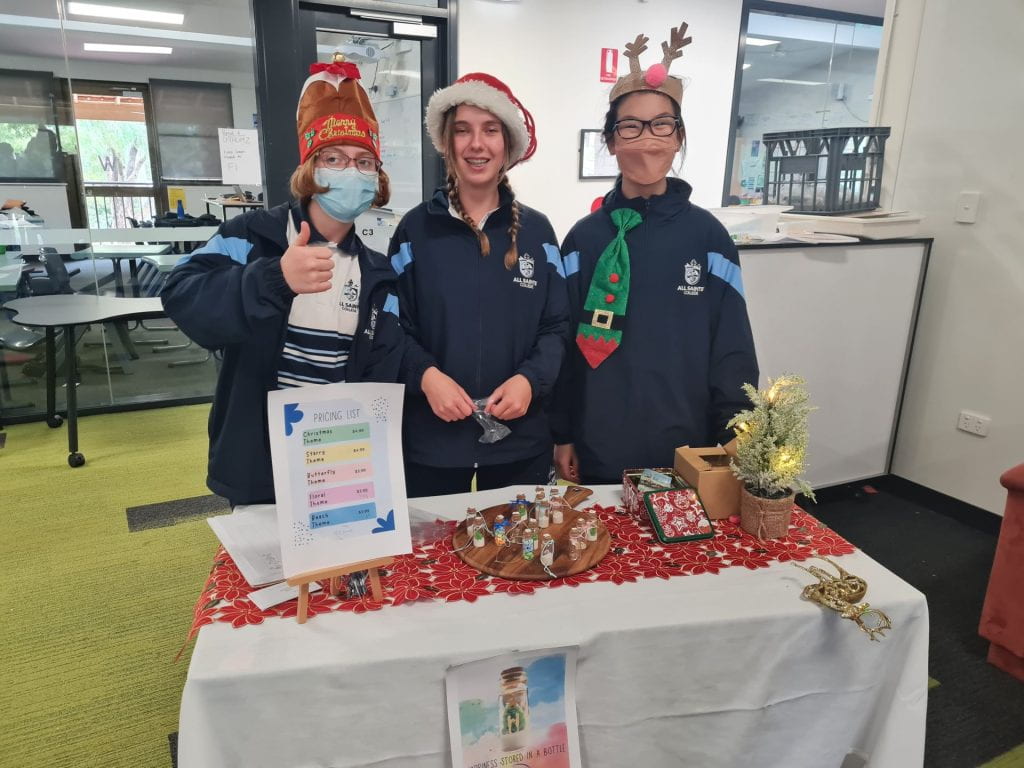
After this, we began to form groups of 2 or 3. I ended up in a group with Emily Hinchliffe and Izzy Hill. We began to brainstorm a range of ideas, from decoration to entertainment. There were several factors which had to be the foundation of our ideas. This included time, budget, supply and demand. Since this project was introduced during Week 1 to 2, we only had about 4 weeks to create prototypes and products. This meant our product couldn’t be too labour-intensive or time-consuming. It had to be quite simple but popular. Another factor was budget. We only had $30 as loan money, which had to be paid back at the end of the Markets. This meant our product had to be cost-effective and economical. An additional factor included supply and demand. If we didn’t have any demand, bulk producing our product would be pointless. This meant our product had to target a specific audience, so our items would be purchased.
We began to brainstorm different ideas as a class, and the normal products made for the Christmas Markets. This included candles, bath bombs, cards and handmade art. Then, we began to brainstorm ideas as a group. Several of our possible ideas included wooden signs, paper flowers, bookmarks and handmade art.
Ideate Stage
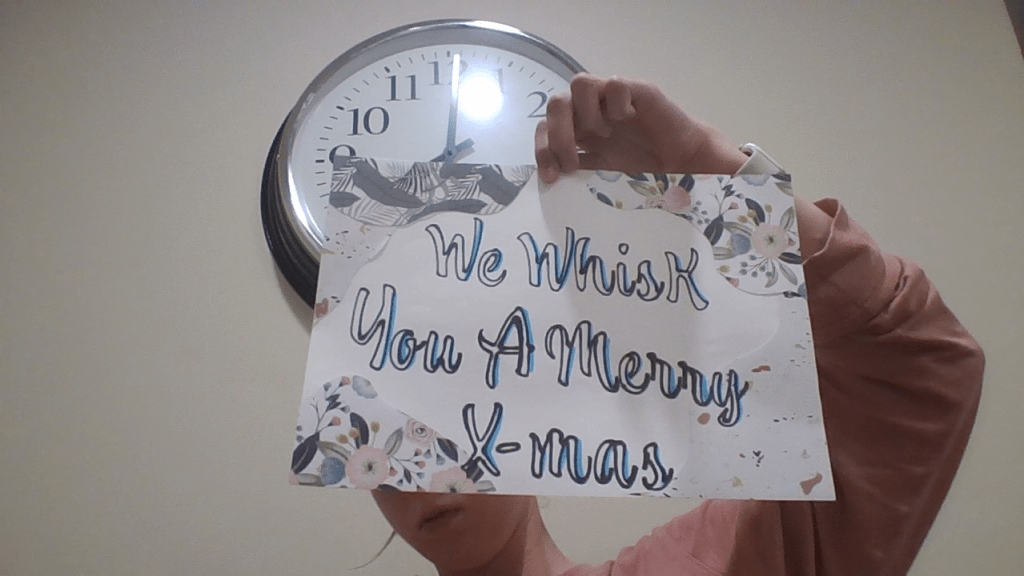
Initially, our idea was to create painted wooden signs, which could be hung up on a wall or a doorknob. There would be funny Christmas puns, like ‘sleigh queen, sleigh’. After deciding on this idea, Emily and Izzy went out to buy all the materials, which cost $28.68. However, a major issue with this was that they had to substitute the wood and paint, to paper, paint, and markers. This ended up making the product a much lower quality, which wouldn’t be purchased by consumers and would be unreliable as a producer. The prototype didn’t end up looking like our original expectations, and several of our group members started leaning towards different ideas.
One idea we came up with was mini glass jar bottles. This was inspired by creating a snowy diorama inside a saltshaker. Inside, there was a little tree, with a reindeer. It looked decorative and was relatively simple to make. However, there were several obstacles to overcome, both relating to our budget. After some research, we discovered that empty saltshakers were expensive, especially if we were to bulk produce our product. Additionally, mini trees were also expensive, and would be difficult to fit in the bottle. We resorted to using small cork bottles purchased from Red Dot, for 60c each. But there was no way we would find trees that small. Instead, we followed a tutorial, where you could roll up pipe cleaners to make trees. Suddenly, this idea had become feasible, and much more economically friendly.
Originally, we were only going to make this type of bottles but realised we could reach a larger target audience by putting different things inside each bottle. Therefore, we created multiple themes inside these bottles. This included floral, beach, butterfly, Christmas and star themes. This was able to reach out to our target audience, females.
Prototype Stage

Soon after this, we created prototypes of each theme, and bought the materials needed. When made, we had to make several minor tweaks, such as the colour or size of the items inside the bottle. The prototypes ended up better than expected, and we presented this idea to the class and Mr Wong. Within the presentation, we included the cost to produce chart, the revenue chart, and the numerous benefits of our product. After being approved, we received our loan money.
We then began to produce our product. The goal was to create 30 bottles, with a variation of desk decoration and tree decoration. Emily began by making the floral theme, Izzy began by making all the butterfly theme, and I made the remaining themes. We spread out the work, so we didn’t need to do any at home. We worked well together and were able to finish all our products in class, as well as the packaging. We created a process to work efficiently, and this made our work less stressful.
Feedback/Test Stage
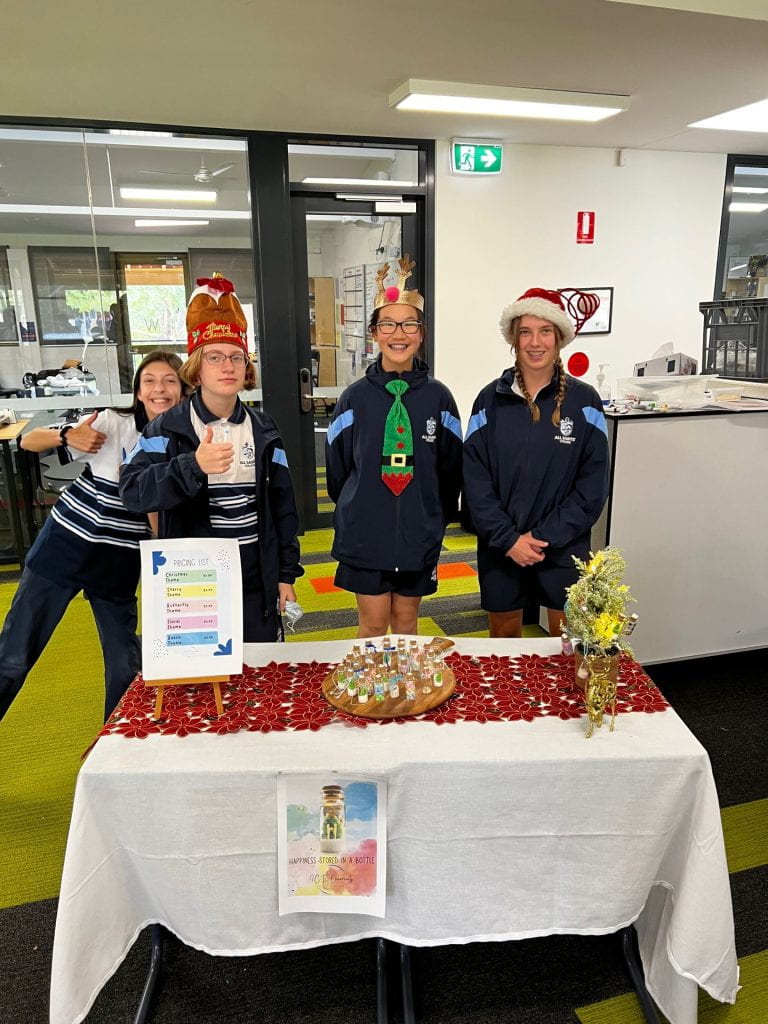
On the morning of the Christmas Markets, we were meant to have a test Christmas Market, but we ended up having more time to work on our products. This allowed us to itemise and code each of our products and prepare our decorations for our stalls. However, this gave us a great disadvantage. We couldn’t see what the market would look like and wouldn’t be able to see how our products had done beforehand. If we had, we may have made better decisions cost wise in the Christmas Market.
Due to the bad weather, the Christmas Markets had been moved undercover. However, this would decrease the foot traffic, and consumer demand. We ended up in a dead spot, the breakout space. We didn’t get that many consumers because it was the only part of the Market, which was indoor, so not many people came inside. We had a lot of our younger audience purchase our products, but not as much of our older audience. About halfway during the Market, we had only sold about a third of our products. This was likely because we were in a dead spot, and our prices were quite expensive. We had priced the Christmas and Star themes at $4.99, the Butterfly and Floral at $3.99 and the Beach theme at $2.99. We made all our product at the average price of $4.00, but left the Beach theme as its original cost. This eventually attracted more customers, and we slowly increased our prices to their original prices, while still attracting consumers. By the end of the Market, we had 9 products left. However, we were able to sell 6 of them at the Year 7 Market.
Spreadsheet
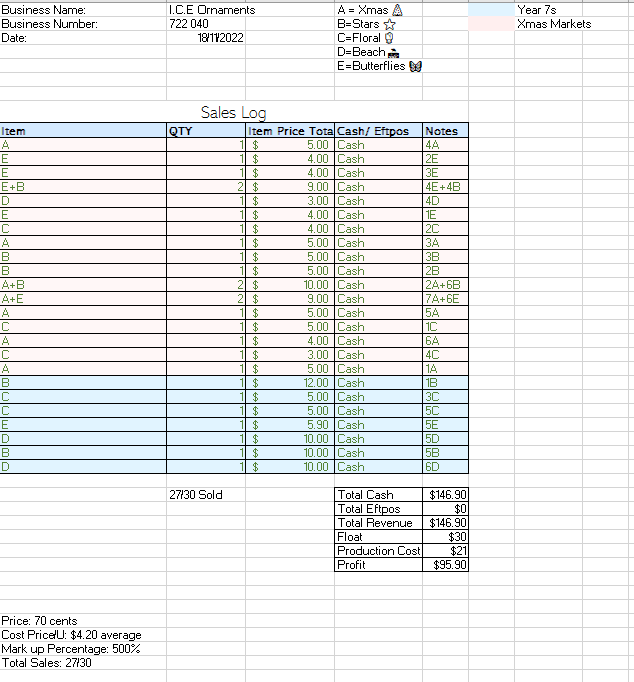
We then created a online copy of our sales log. This involved our revenue, profit, sales, the changing of prices and the details of each sale (such as the codes). We ended up with a profit of $95.90 and a revenue of $146.90.
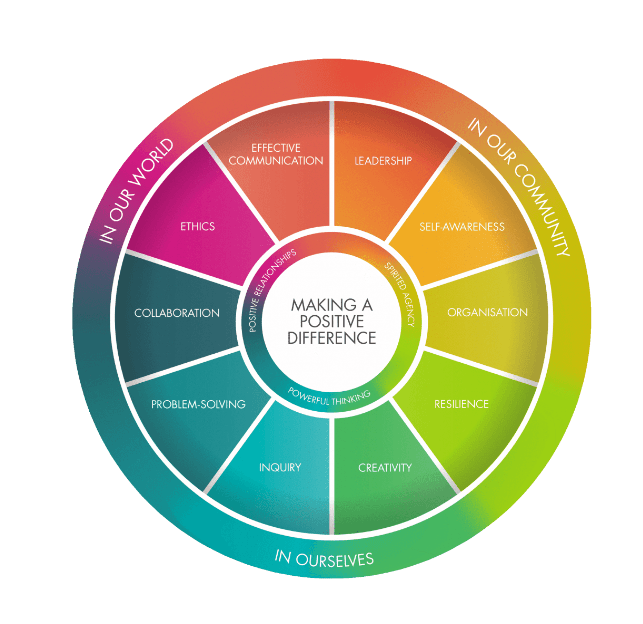
ASC Capabilities
Collaboration
One of the key factors of the Christmas Markets was collaboration. It was important that we worked as a group so we could get all the necessary work completed.
Problem Solving
Another key factor of the Christmas Markets was problem solving. When it came to creating a feasible idea, we had to work as a group and brainstorm different solutions. Eventually, we came up with a feasible solution which would work as our final product.
Effective Communication
As a team, we had to have effective communication to work together to complete this project. If we didn’t have effective communication, we wouldn’t be able to complete this project successfully.
Final Conclusion
Overall, this project was a learning curve and provided an experience of becoming a producer. This was a very enjoyable and fun learning experience, which allowed me to learn a lot more about advertising and economics. I would like to say thank you to all the staff and students which made this opportunity possible.